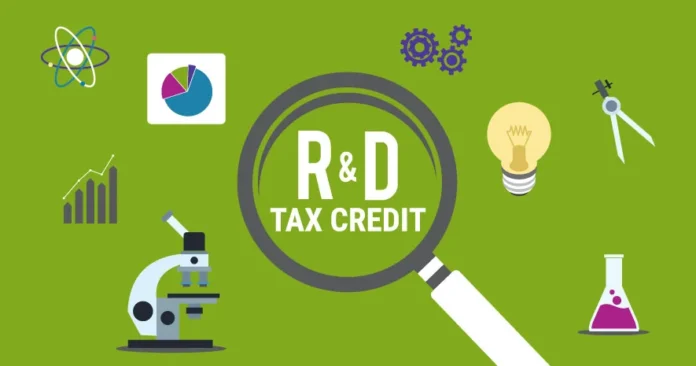The Research and Development (R&D) tax credit is a valuable tax incentive for small businesses that engage in qualified R&D activities. It allows eligible businesses to claim a credit against their federal and/or state income tax liability. However, many small business owners are not aware of their eligibility for the credit or are unsure of how to properly claim it. Maximizing the R&D tax credit requires a thorough understanding of eligibility requirements, best practices for claiming the credit, and awareness of recent changes to tax laws. This article will provide tips and strategies for small business owners for best practices for claiming the credit, industry-specific opportunities, common mistakes to avoid, and recent changes to tax laws. By taking advantage of these strategies, small business owners can significantly reduce their tax liability and reinvest those savings into further innovation and growth.
Understanding the Eligibility

To take advantage of this credit, small business owners must first understand the eligibility requirements. Eligible businesses must meet four criteria to qualify for it:
- Permitted Purpose: The research activities must be intended to develop or improve a product or process, or create new technology.
- Technical Uncertainty: The research must be conducted to address a technical uncertainty or problem that cannot be solved by routine engineering.
- Process of Experimentation: The business must engage in a process of experimentation to evaluate different alternatives to address the technical uncertainty.
- Technological in Nature: The research must rely on the principles of physical or biological sciences, engineering, or computer science.
Small businesses that meet these criteria can claim it for qualified research expenses (QREs), including wages, supplies, and contract research costs. Eligible businesses can claim the credit against their federal and/or state income tax liability, and unused credits can be carried forward for up to 20 years.
It is important to note that eligibility requirements can vary depending on the specific industry and type of R&D activities being conducted.
Best Practices for Maximizing R&D Tax Credit

To maximize the tax credit, small business owners should follow best practices for claiming the credit. These practices include:
- Documenting R&D Activities: Keeping detailed documentation of R&D activities is crucial for claiming it. Business owners should keep a record of the purpose, process, and results of their R&D activities to demonstrate their eligibility for the credit.
- Properly Allocating Employee Time and Expenses: Small business owners should properly allocate employee time and expenses to R&D activities to ensure that they are claimed as qualified research expenses. This includes accurately tracking time spent on R&D activities and documenting expenses related to those activities.
- Utilizing Third-Party Contractors: Small businesses can also claim expenses incurred for third-party contractors who perform qualified research activities on behalf of the business. Business owners should ensure that the contract clearly defines the R&D activities to be performed and the related expenses.
- Capturing Qualified Research Expenses (QREs): Small business owners should capture all QREs, including wages, supplies, and contract research costs. They should also ensure that these expenses are properly allocated to the specific R&D activities for which they were incurred.
- Keeping Track of Relevant Tax Law Changes: Tax laws related to the R&D tax credit can change frequently. Small business owners should stay informed of any changes to ensure that they are taking advantage of all available tax incentives.
By following these best practices, small business owners can ensure that they are maximizing their R&D credit.
Industry-Specific Opportunities
While it is available to all eligible small businesses, certain industries have specific opportunities for claiming the credit. Below are a few examples of industry-specific opportunities:
Software Development
Small businesses that engage in software development may be eligible for it. This includes the development of new software, improvements to existing software, and the development of new features or functionality. Examples of eligible activities include developing algorithms, testing and debugging code, and developing user interfaces.
Biotechnology

Biotech companies that engage in research and development of new drugs or medical devices may be eligible for it. Eligible activities include researching and developing new drugs, conducting clinical trials, and developing medical devices.
Manufacturing
Small businesses in the manufacturing industry may be eligible for activities such as developing new products or improving existing products, designing and testing new production processes, and improving quality control methods.
Engineering
Small businesses in the engineering industry may be eligible for activities such as designing new products, developing prototypes, and testing and evaluating new materials or manufacturing processes.
By understanding the industry-specific opportunities, small business owners can identify potential tax incentives for their specific business activities.
Common Mistakes to Avoid When Claiming
Small business owners should be aware of common mistakes that can arise when claiming it. By avoiding these mistakes, they can ensure that they are accurately claiming the credit and avoiding potential penalties or audit issues. Below are a few common mistakes to avoid when claiming it:
1. Failing to Properly Document R&D Activities

As mentioned earlier, it is crucial to keep detailed documentation of R&D activities to demonstrate eligibility. Failing to document R&D activities properly can result in the disqualification of the credit.
2. Not Claiming All Qualified Research Expenses
Small business owners may miss out on the full value of the tax credit if they do not capture all qualified research expenses. For example, failing to claim expenses related to contract research costs or employee wages can result in a reduced credit amount.
3. Incorrectly Allocating Expenses
Small business owners may incorrectly allocate expenses to R&D activities, resulting in a disallowed credit. It is important to ensure that all expenses are properly allocated to the specific R&D activities for which they were incurred.
4. Not Maximizing the Credit
Small business owners may miss out on additional tax savings by failing to maximize the R&D tax credit. For example, they may not take advantage of carryforward or carryback provisions, which can result in tax savings in future or past years.
5. Relying on Inaccurate or Outdated Information
Small business owners may rely on outdated or inaccurate information when claiming the credit, resulting in noncompliance.
By avoiding these common mistakes, they can ensure that they are accurately claiming it and reducing their overall tax liability.
Recent Changes to R&D Tax Credit

It has undergone recent changes that small business owners should be aware of. Below are a few updates:
- Permanence: In 2015, the Protecting Americans from Tax Hikes (PATH) Act made the R&D tax credit permanent, providing certainty for small business owners who rely on the credit.
- Alternative Minimum Tax (AMT): The PATH Act also made changes to the AMT, allowing small businesses with gross receipts of less than $50 million to use the R&D tax credit to offset AMT liability.
- Payroll Tax Offset: The 2016 PATH Act allowed small businesses with less than $5 million in gross receipts to use the R&D tax credit to offset payroll taxes.
- Qualified Start-Up Expenses: The 2020 Consolidated Appropriations Act (CAA) allows start-up companies to use the R&D tax credit to offset payroll taxes, even if they do not have any income tax liability. The CAA also allows businesses with less than $5 million in gross receipts to use the credit against their first $250,000 in payroll taxes.
- Changes to Eligible Expenses: The CAA also made changes to eligible expenses. Beginning in 2021, expenses related to the development of software are eligible for the credit, regardless of whether the software is intended for internal use or commercial sale.
By staying up to date on changes, small business owners can ensure that they are taking advantage of all available incentives.
Conclusion

The R&D tax credit can be a valuable incentive for small businesses that invest in research and development activities. By understanding eligibility requirements, best practices for maximizing the credit, industry-specific opportunities, common mistakes to avoid, and recent changes to the credit, small business owners can ensure that they are accurately claiming the credit. However, navigating the complexities of it can be challenging. With careful planning and documentation, small business owners can successfully claim it and invest in the future growth and innovation of their business.









